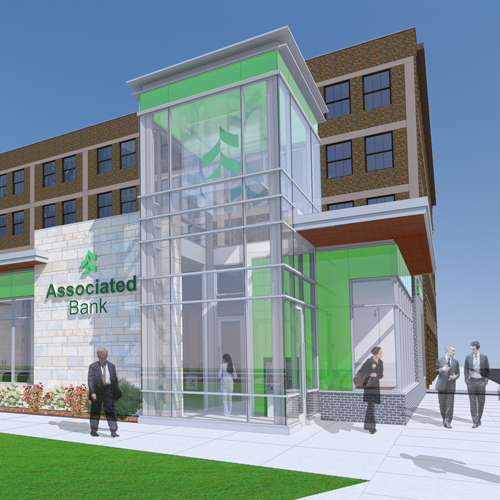Every year, millions of American high school students fill out college applications, and those colleges are marketing to and competing for the students more than ever before. That’s because in a recovering economy, state funding is going down and thus pushing tuition prices up. Institutions of higher learning are under greater pressure to entice potential enrollees, and many are rolling out flashy new facilities and amenities to get the job done.
Richard T. Linio graduated from Kentucky’s Morehead State University, managed arenas and stadiums for 15 years, developed them, and then in 1999 became the director of facilities management for the Olympic Village during the 2002 Winter Olympics. At the conclusion of the games, he went into corporate facilities before returning to his alma mater in 2013. Today, as assistant vice president of facilities management, he’s helping Morehead embark on more than $100 million worth of new projects and renovations over the next five years. The capital-improvement projects are designed to help the college compete with Eastern Kentucky University and other nearby schools.
“We’re an academic institution, but we’re also a business,” Linio says. “We’re growing, and we have to attract and retain students. If you don’t stay ahead, you fall behind in the race, and it’s hard to make up ground.”
Designed by the Olmsted brothers—the historic architectural team responsible for New York’s Central Park—Morehead State is a classic, historic campus in Eastern Kentucky currently hosting 11,000 students from surrounding states. Although just 3,000 students live on campus, between 8,000 and 10,000 are on-site at any given time.
The campus has been under continuous renovation for the past 30 years, and the facilities-management team is currently using a campus master plan that was approved in 1990 and revised in 2002. Recent notable accomplishments under the master plan have included the completion of a 21-meter radio telescope used by faculty and students in a unique space science degree program and the construction of a LEED Gold-certified recreation and wellness center.
Now, the team is running through a series of projects that will change the complexion of the entire campus. They’re removing a boulevard that’s bisected the school’s property for the past 40 years to create a pedestrian mall, building the school’s first new housing units of the past 50 years, updating housing on an agriculture complex, expanding and renovating the popular Adron Doran University Center (ADUC), opening a new alumni welcome center, and anchoring all the new development with a central parking structure and a dining facility.
________________________________________________________________________
 1. New Residences for the Main Campus and the Derrickson Agriculture Complex
1. New Residences for the Main Campus and the Derrickson Agriculture Complex
The main quad and a farm for the Agricultural Sciences department are both getting new housing structures that will offer the latest in safety and technology. At the center of campus, there are plans for a collegiate gothic-style building that will accommodate 520 suite-style beds. Richard T. Linio’s research has revealed that modern students bring as many as six digital gadgets with them to campus, so the new housing facility will have a robust wireless infrastructure. Construction will begin in spring 2015.
Across the campus, near an equine center, barns, a greenhouse, and a working farm, new residential facilities will replace a series of old duplexes, effectively doubling the site’s capacity from 24 to 48. The housing on the main campus and at the farm is scheduled to be completed by fall 2016.
2. Turning University Boulevard into Pedestrian Plaza
Morehead’s campus features a skinny boulevard that crosses much of the property. As enrollment has grown, the once-peaceful length of road has become too cluttered with foot traffic, campus buses, and other vehicles. To mitigate this, designers will close a half-mile section, remove about 77 parking spots, and create a pedestrian mall tied into the ADUC expansion (see below). The mall will sit adjacent to a bell tower and a great lawn, and it will add open spaces, sitting areas, and gathering spots.
3. The Adron Doran University Center (ADUC) Renovation and Expansion
Adron Doran was the university’s president for more than 20 years and helped put Morehead State on the map. The building named for him dates back to 1956 and serves as a hub for student life, housing everything from a post office and a bookstore to a Starbucks and a Taco Bell. Renovations will add 80,000 square feet to its existing 120,850 square feet, and the improvements will include a new outdoor plaza, improved meeting spaces, a new entrance, and face-lifts to food courts, activity rooms, and the bookstore.
“We want to add more interactive features and collaborative spaces,” Linio says. Specifically, his team is looking to include tech solutions such as remote food-ordering systems.
Because ADUC was last renovated 10 years ago, teams will also update its infrastructure with a new HVAC system and a new roof. And, the building’s marble exterior will be replaced with a brick façade that will help match ADUC to the rest of the campus. The $50 million project is on target to wrap by 2018.
4. The Alumni and Welcome Center Project
A proposed alumni and welcome center at the corner of East Main Street and University Boulevard will become the school’s new front door. “We want this to be a popular spot where prospective students and visitors can get information and where graduates can gather or attend events,” Linio says.
The building will also hold a hall of fame, a museum, a gift shop, and other displays. The center is now in its early planning stages and has a price tag of $5 million—$4 million of which will come from private funding provided by the MSU foundation. Construction will begin in 2016.
 5. East Parking Structure and Dining Commons
5. East Parking Structure and Dining Commons
Since the main campus’s new housing project will displace 400 student parking spaces, Morehead officials decided to build a three-story, three-bay parking structure. It will be located in the heart of Morehead’s residential community, overlooking the campus, and it will feature expansive glass, a brick veneer, and intricate stonework.
The facilities-management team is also working with food-service provider Aramark on fresh-food concepts for an adjacent 25,000-square-foot dining hall. The facility will replace an outdated hall in the school’s Alumni Tower and bring food service closer to residential units. “A big focus of all these projects is to tie everything together and make things more simple and convenient for our students,” Linio says. “We really want to improve the atmosphere here and create the kind of environment that students want.” The dining hall will cost $17 million and should be completed by fall 2016.


